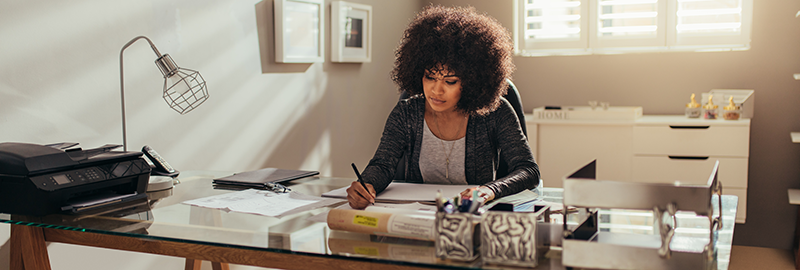For many of our patients at IONA Physiotherapy in Drumcondra, ever-increasing computer usage can be associated with neck, shoulder and even arm pain. Often, if the computer workstation is not set up well, this neck and shoulder pain gets worse, the longer you spend at your computer. Sound familiar? The good news is, is that there is lots you can do to optimize your workstation and minimize discomfort! Neck and shoulder pain is one of the most common complaints that we see at IONA Physiotherapy in Drumcondra, and an analysis of the workstation is an important part of the assessment. Based on the most common mistakes that we see, here are our top tips!
Top tips for Improving your computer Workstation
- If you use a laptop, make sure that you can separate the keyboard from the screen. An old keyboard that you can plug into your laptop will do the trick, allowing you to move the screen away from you to the correct position.
- The top of your screen should be level with your eyes, and should be placed directly in front of you.
- If you need glasses for the computer, wear them! Otherwise, you are likely to lean your head excessively forward to read the text, causing strain which can lead to neck and shoulder pain.
- Ensure that there is enough cord attached to your keyboard to allow you to place your keyboard close to you. Your arms should not need to reach forward to use the keyboard.
- Similarly, you should be able to easily reach the mouse with your arm comfortably by your side. Consider a shorter keyboard if you don’t frequently use the number’s keys on you keyboard.
- Your feet should be flat on the floor, if your feet don’t reach the floor while sitting back into your seat, use a foot rest.
- The chair should be firm but covered with soft padding. Ideally it should have a lumbar support to support the natural hollow in your lower back. The backrest should recline roughly 15 degrees, and lock into position, allowing you to rest back into your seat.
- If the chair has arm rests, they should slide under the desk, allowing you to get close enough to your keyboard.
- Use a document holder between your keyboard and screen if your work combines computer and paper work.

What next?
The above are some examples of the most common mistakes that we see at IONA Physiotherapy in Drumcondra. This does not take the place of a thorough assessment by a physiotherapist, but it’s a good start! For further information regarding the set up of your work station, click on the following link:
https://www.osha.gov/SLTC/etools/computerworkstations/checklist_purchasing_guide.html
We hope that the above helps, however if you continue to have ongoing pain or discomfort, then we recommend that you make an appointment at the clinic for an assessment. Please phone 01 7979545 for appointments.




